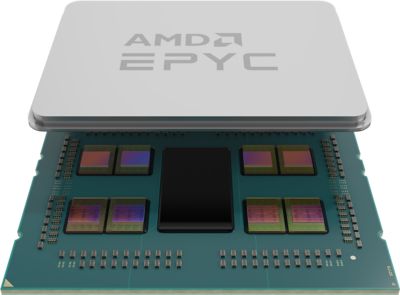-
United States -
United Kingdom -
India -
France -
Deutschland -
Italia -
日本 -
대한민국 -
中国 -
台灣
-
Ansys는 학생들에게 시뮬레이션 엔지니어링 소프트웨어를 무료로 제공함으로써 오늘날의 학생들의 성장을 지속적으로 지원하고 있습니다.
-
Ansys는 학생들에게 시뮬레이션 엔지니어링 소프트웨어를 무료로 제공함으로써 오늘날의 학생들의 성장을 지속적으로 지원하고 있습니다.
-
Ansys는 학생들에게 시뮬레이션 엔지니어링 소프트웨어를 무료로 제공함으로써 오늘날의 학생들의 성장을 지속적으로 지원하고 있습니다.
PRESS RELEASE
DATE: 3/21/2022
Ansys Collaborates with Microsoft to Drive Innovation Forward with Chip Development, Simulation, and Cloud Computing
3rd Gen AMD EPYC™ processors with AMD 3D V-Cache™ technology — available on Microsoft Azure HBv3 virtual machines (VMs) — will be offered to Ansys Cloud customers in 2022
Key Highlights
- Ansys Cloud will automatically upgrade to offer the AMD EPYC 7003 Series processors with AMD 3D V-Cache technology today
- 3rd Gen AMD EPYC processors with AMD 3D V-Cache use 3D stacking technology to provide fantastic performance for technical computing workloads
PITTSBURGH, PA, March 21, 2022 – Ansys (NASDAQ: ANSS) customers will have automatic cloud access to the latest 3rd Gen AMD EPYC processors with AMD 3D V-Cache technology, available on Microsoft Azure HBv3 VMs. Ansys Cloud, the managed cloud service provided by Ansys and enabled on Azure, will automatically upgrade to offer the ability to use the latest AMD chips today.
Designed specifically to accelerate computer-aided engineering (CAE) workflows, the new Azure HBv3 VMs with 3rd Gen AMD EPYC processors with AMD 3D V-Cache technology produce unprecedented performance boosts for technical computing workloads. In early testing by Azure, the company saw up to 80% improvement in large-scale computational fluid dynamics (CFD) simulations and up to 50% improvement in explicit finite element analysis (FEA) crash tests. This means that Ansys Cloud customers can solve CAE problems much faster, leading to better design decisions in a shorter amount of time.
“There is more demand than ever for high performance computing. At AMD we continue to look at providing our partners and customers with the right processor to support the right workload, and the 3rd Gen AMD EPYC processors with AMD 3D V-Cache technology do that for technical workloads,” said Ram Peddibhotla, corporate vice president, EPYC product management, AMD. “We are excited to work with Azure and Ansys to create a solution that provides fantastic performance for technical workloads like CFD, FEA and more.”

Ansys Cloud will soon be automatically upgraded to offer AMD EPYC 7003 series processors with AMD 3D V-Cache technology (Image credit: AMD)
“The incredible performance boost of the HBv3 virtual machines on Azure is unprecedented, and it is especially rewarding to see this made possible by the innovative 3D memory stacking implemented by AMD,” said Shane Emswiler, senior vice president of products at Ansys. “This is truly a virtuous circle for Ansys, and it will result in our customers gaining the confidence to shift more of their simulation workloads to the cloud to reap the performance gains as soon as possible.”
“In every industry and research community, innovation is now a compute bound problem which means advances in HPC are now more strategically important to Microsoft Azure customers than ever,” said Evan Burness, Principal Program Manager for HPC, Microsoft Azure. “Working closely with Ansys, we’re able to quickly bring 3rd Gen AMD EPYC processors with AMD 3D V-Cache into Azure’s most popular HPC virtual
machine, HBv3, to the benefit of all Ansys Cloud customers. It’s a powerful combination of software tools and one of the most powerful HPC solutions available.”
Once released, Ansys Cloud customers can easily select HBv3 as their VM option; no further actions will be necessary for the upgrade.
About Ansys
If you've ever seen a rocket launch, flown on an airplane, driven a car, used a computer, touched a mobile device, crossed a bridge, or put on wearable technology, chances are you've used a product where Ansys software played a critical role in its creation. Ansys is the global leader in engineering simulation. Through our strategy of Pervasive Engineering Simulation, we help the world's most innovative companies deliver radically better products to their customers. By offering the best and broadest portfolio of engineering simulation software, we help them solve the most complex design challenges and create products limited only by imagination. Founded in 1970, Ansys is headquartered south of Pittsburgh, Pennsylvania, U.S.A. Visit www.ansys.com for more information.
Ansys and any and all ANSYS, Inc. brand, product, service and feature names, logos and slogans are registered trademarks or trademarks of ANSYS, Inc. or its subsidiaries in the United States or other countries. All other brand, product, service and feature names or trademarks are the property of their respective owners.
AMD, the AMD Arrow logo, EPYC, AMD 3D V-Cache technology and combinations thereof are trademarks of Advanced Micro Devices, Inc.
ANSS-T
시작하기
엔지니어링 과제에 직면하고 있다면우리 팀이 도와드리겠습니다. 풍부한 경험과 혁신에 대한 헌신을 가지고 있는 우리에게 연락해 주십시오. 협력을 통해 엔지니어링 문제를 성장과 성공의 기회로 바꾸십시오. 지금 문의하기










